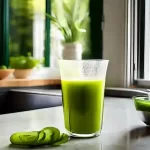Anti-Inflammatory Diet: Improve Your Health with These Foods and Meal Plans
If you’re looking to improve your overall health and well-being, consider adopting an anti-inflammatory diet. This way of eating focuses on consuming foods that reduce inflammation in the body, which can lead to a variety of health benefits.
Table of Contents:
Anti-Inflammatory Foods
There are many foods that are considered anti-inflammatory, including:
Turmeric
Turmeric is a spice that is commonly used in cooking and traditional medicine. It is derived from the roots of the Curcuma longa plant, which is native to Southeast Asia. Turmeric is widely used in Indian and Middle Eastern cuisine, where it is often used as a natural coloring agent to give dishes a vibrant yellow color.
In addition to its culinary uses, turmeric is also believed to have numerous health benefits. It is often used in traditional Ayurvedic and Chinese medicine to treat a range of conditions, including inflammation, arthritis, and digestive issues. The active ingredient in turmeric is curcumin, which has antioxidant and anti-inflammatory properties.
Ginger
Ginger is a perennial herb native to Southeast Asia, prized for its medicinal properties and culinary uses. The plant has long, slender leaves and a thick, knotty underground stem, or rhizome, that is yellowish in color and spicy in flavor.
Ginger is widely used in many cuisines around the world, adding a warm, pungent flavor to dishes such as curries, stir-fries, and baked goods. It is also used in many herbal remedies for its anti-inflammatory, antioxidant, and digestive benefits, and is often recommended for nausea, vomiting, and motion sickness.
Ginger can be consumed in a variety of forms, including fresh, dried, powdered, or as an oil or juice. It is a versatile ingredient that adds both flavor and health benefits to a wide range of dishes and beverages.
Blueberries
Blueberries are small, round, bluish-purple berries that grow on shrubs in the heath family. They are native to North America, but are now grown in many parts of the world. Blueberries are packed with antioxidants and other beneficial nutrients, making them a popular health food.
They are often eaten fresh as a snack, but can also be used in a variety of recipes, including baked goods, smoothies, and salads. Blueberries are also commonly used in jams, jellies, and syrups. Overall, blueberries are a delicious and nutritious fruit that can be enjoyed in many different ways.
Leafy greens
Leafy greens refer to a variety of edible plant leaves that are typically green in color and used in salads, soups, stir-fries, and other dishes. Examples of leafy greens include spinach, kale, lettuce, arugula, collard greens, Swiss chard, and bok choy, among others.
Leafy greens are known for their high nutrient content, including vitamins A, C, and K, as well as minerals such as calcium and iron. They are also a good source of dietary fiber and antioxidants, which can help promote overall health and prevent chronic diseases. Incorporating leafy greens into your diet can be an easy and delicious way to boost your nutrient intake and support a healthy lifestyle.
Salmon
Salmon is a type of fish that belongs to the family Salmonidae. It is found in both freshwater and saltwater environments and is known for its distinctive pink-orange flesh. Salmon is a popular food item worldwide and is consumed in a variety of forms, including raw in sushi, smoked, grilled, and baked.
Salmon is a rich source of protein, omega-3 fatty acids, and vitamin D, making it a healthy choice for many people. It is also a versatile ingredient that can be used in a wide range of recipes, from salads and sandwiches to pasta dishes and soups.
There are several species of salmon, including Atlantic, Chinook, Coho, Sockeye, and Pink. Each species has a slightly different flavor and texture, making it important to choose the right type of salmon for the recipe you’re making.
Walnuts
Walnuts are a type of tree nut that grow inside a hard, shell-like outer covering. They are native to North America but are now widely cultivated around the world. Walnuts are an excellent source of healthy fats, protein, and fiber, as well as a range of vitamins and minerals, including vitamin E, magnesium, and phosphorus.
They are often eaten as a snack on their own, but can also be used in baking, cooking, and as a topping for salads and other dishes. In addition to their nutritional benefits, walnuts have been linked to a variety of health benefits, including improved heart health and a reduced risk of certain types of cancer.
Green tea
Green tea is a type of tea made from the leaves of the Camellia sinensis plant. Unlike black tea, green tea is not fermented during processing, which helps to preserve its natural antioxidants and nutrients. It has a mild, earthy flavor and is known for its health benefits, which include boosting metabolism, improving brain function, and reducing the risk of certain diseases, such as cancer and heart disease.
Green tea also contains caffeine and L-theanine, a unique amino acid that can help to promote relaxation and reduce stress. It is often consumed hot or cold, and can be enjoyed plain or with added flavors such as lemon or honey.
Dark chocolate
Dark chocolate is a type of chocolate that is made from cocoa solids, sugar, and sometimes cocoa butter. Unlike milk chocolate, it does not contain milk solids. The percentage of cocoa solids in dark chocolate can vary, with higher percentages indicating a more intense chocolate flavor and a higher amount of antioxidants.
Dark chocolate is typically made by roasting and grinding cocoa beans, then adding sugar and other ingredients to create the desired flavor and texture. It can be enjoyed on its own or used in cooking and baking. In addition to its rich, complex flavor, dark chocolate is also known for its potential health benefits, such as improving heart health and reducing inflammation.
Health Benefits
Consuming an anti-inflammatory diet has been shown to have a variety of health benefits, including:
Reduced risk of chronic diseases
An anti-inflammatory diet can reduce the risk of chronic diseases like diabetes, cancer, and Alzheimer’s by reducing inflammation in the body. It achieves this by including foods that are high in antioxidants, fiber, and healthy fats while limiting or avoiding processed and high-sugar foods that can cause inflammation.
Improved digestion
An anti-inflammatory diet can improve digestion by including foods that are easy to digest, such as fruits, vegetables, and lean proteins. These foods also help to maintain a healthy gut microbiome, which is important for digestion and overall health. Additionally, an anti-inflammatory diet can reduce gut inflammation, which can cause digestive issues like bloating and constipation.
Reduced joint pain
An anti-inflammatory diet can reduce joint pain by reducing inflammation in the body. This is achieved by including foods that are high in omega-3 fatty acids, which are anti-inflammatory. Additionally, an anti-inflammatory diet limits or avoids processed and high-sugar foods that can cause inflammation and lead to joint pain.
Lowered risk of heart disease
An anti-inflammatory diet can lower the risk of heart disease by reducing inflammation in the body. It achieves this by including foods that are high in fiber, healthy fats, and antioxidants while limiting or avoiding processed and high-sugar foods that can cause inflammation. An anti-inflammatory diet can also lower cholesterol levels and reduce the risk of blood clots, both of which are risk factors for heart disease.
Boosted immune system
An anti-inflammatory diet can boost the immune system by including foods that are high in nutrients like vitamin C, vitamin E, and zinc, which are important for immune function. It also limits or avoids processed and high-sugar foods that can weaken the immune system by causing inflammation. Additionally, an anti-inflammatory diet can reduce the risk of autoimmune diseases, which occur when the immune system attacks the body’s own tissues.
Lowered inflammation
An anti-inflammatory diet can lower inflammation in the body by including foods that are high in antioxidants, fiber, and healthy fats while limiting or avoiding processed and high-sugar foods that can cause inflammation. Lowered inflammation can improve overall health and reduce the risk of chronic diseases.
Meal Plans
There are several different meal plans that follow the principles of an anti-inflammatory diet. Consider trying one of the following. Remember to consult with a healthcare professional before making any changes to your diet.
Weekly Anti-Inflammatory Meal Plan
Monday:
- Breakfast: Avocado toast with a poached egg and a side of berries
- Lunch: Grilled chicken salad with mixed greens, tomatoes, and a balsamic vinaigrette
- Dinner: Baked salmon with roasted asparagus and quinoa
Tuesday:
- Breakfast: Greek yogurt with sliced banana, honey, and walnuts
- Lunch: Lentil soup with a side of mixed berries
- Dinner: Grilled chicken with roasted sweet potato and sautéed spinach
Wednesday:
- Breakfast: Smoothie bowl made with mixed berries, banana, almond milk, and chia seeds
- Lunch: Tuna salad with mixed greens, tomatoes, and a lemon vinaigrette
- Dinner: Beef stir-fry with mixed veggies and brown rice
Thursday:
- Breakfast: Oatmeal with mixed berries and almond butter
- Lunch: Grilled chicken wrap with hummus, cucumber, and mixed greens
- Dinner: Grilled shrimp with roasted Brussels sprouts and brown rice
Friday:
- Breakfast: Egg white omelet with spinach, mushrooms, and a side of mixed berries
- Lunch: Greek salad with mixed greens, feta cheese, and olives
- Dinner: Baked chicken with roasted sweet potato and sautéed kale
Saturday:
- Breakfast: Smoothie bowl made with mixed berries, banana, almond milk, and flax seeds
- Lunch: Grilled chicken skewers with roasted veggies and a side of fruit
- Dinner: Salmon with roasted broccoli and quinoa
Sunday:
- Breakfast: Avocado toast with smoked salmon and a side of berries
- Lunch: Grilled shrimp salad with mixed greens, tomatoes, and a balsamic vinaigrette
- Dinner: Grilled steak with roasted asparagus and brown rice
This weekly meal plan includes a variety of anti-inflammatory foods such as berries, leafy greens, healthy fats, and lean proteins. By incorporating these foods into your diet, you can help reduce inflammation in the body and improve your overall health.
Mediterranean Diet
Monday:
- Breakfast: Greek yogurt with sliced banana, honey, and walnuts
- Lunch: Whole-grain pita stuffed with hummus, cucumber, tomato, and grilled chicken
- Dinner: Baked salmon with roasted asparagus and quinoa
Tuesday:
- Breakfast: Omelet made with spinach, tomatoes, and feta cheese
- Lunch: Greek salad with mixed greens, feta cheese, olives, and grilled chicken
- Dinner: Grilled shrimp with roasted veggies and brown rice
Wednesday:
- Breakfast: Smoothie bowl made with mixed berries, banana, almond milk, and chia seeds
- Lunch: Tuna salad with mixed greens, tomato, cucumber, and lemon vinaigrette
- Dinner: Grilled chicken with roasted sweet potato and sautéed spinach
Thursday:
- Breakfast: Oatmeal with mixed berries and almond butter
- Lunch: Whole-grain pita stuffed with grilled veggies, hummus, and feta cheese
- Dinner: Baked chicken with roasted sweet potato and sautéed kale
Friday:
- Breakfast: Avocado toast with a poached egg and a side of berries
- Lunch: Grilled chicken salad with mixed greens, tomato, and balsamic vinaigrette
- Dinner: Grilled steak with roasted asparagus and brown rice
Saturday:
- Breakfast: Smoothie bowl made with mixed berries, banana, almond milk, and flax seeds
- Lunch: Whole-grain pita stuffed with roasted veggies, hummus, and grilled chicken
- Dinner: Grilled salmon with roasted Brussels sprouts and quinoa
Sunday:
- Breakfast: Omelet made with spinach, mushrooms, and feta cheese
- Lunch: Greek salad with mixed greens, grilled chicken, and balsamic vinaigrette
- Dinner: Grilled chicken with roasted veggies and brown rice
The Mediterranean diet includes a variety of anti-inflammatory foods that are rich in antioxidants, vitamins, and minerals. Incorporating these foods into your diet can help reduce inflammation in the body and improve your overall health.
Vegan Anti-Inflammatory Meal Plan
Monday:
- Breakfast: Smoothie bowl made with mixed berries, banana, almond milk, and chia seeds
- Lunch: Roasted veggie quinoa bowl with hummus and mixed greens
- Dinner: Lentil soup with a side of mixed berries
Tuesday:
- Breakfast: Oatmeal with mixed berries, almond butter, and flax seeds
- Lunch: Roasted vegetable wrap with hummus, tomato, and mixed greens
- Dinner: Vegan chili with a side of quinoa
Wednesday:
- Breakfast: Avocado toast with a side of berries
- Lunch: Chickpea salad with mixed greens, tomatoes, and lemon vinaigrette
- Dinner: Vegan lentil shepherd’s pie
Thursday:
- Breakfast: Tofu scramble with spinach and mushrooms
- Lunch: Roasted veggie quinoa bowl with hummus and mixed greens
- Dinner: Vegan chickpea and vegetable stir-fry with brown rice
Friday:
- Breakfast: Smoothie bowl made with mixed berries, banana, almond milk, and hemp seeds
- Lunch: Vegan black bean burger with a side of sweet potato fries
- Dinner: Vegan roasted vegetable lasagna
Saturday:
- Breakfast: Oatmeal with mixed berries and almond butter
- Lunch: Vegan chickpea and vegetable stir-fry with brown rice
- Dinner: Vegan chili with a side of quinoa
Sunday:
- Breakfast: Vegan breakfast burrito with tofu scramble, avocado, and mixed greens
- Lunch: Vegan black bean burger with a side of sweet potato fries
- Dinner: Vegan roasted vegetable lasagna
This vegan anti-inflammatory meal plan is rich in fruits, vegetables, whole grains, and legumes, which are all anti-inflammatory foods. By incorporating these foods into your diet, you can help reduce inflammation in the body and improve your overall health.
Low-Carb Anti-Inflammatory Meal Plan
Monday:
- Breakfast: Scrambled eggs with sautéed spinach and avocado
- Lunch: Grilled chicken salad with mixed greens, tomato, and balsamic vinaigrette
- Dinner: Grilled salmon with roasted asparagus and mashed cauliflower
Tuesday:
- Breakfast: Greek yogurt with mixed berries and chopped walnuts
- Lunch: Tuna salad with mixed greens, tomato, and lemon vinaigrette
- Dinner: Beef stir-fry with mixed veggies and brown rice (optional)
Wednesday:
- Breakfast: Smoothie bowl made with mixed berries, avocado, almond milk, and chia seeds
- Lunch: Grilled chicken wrap with hummus, mixed greens, and cucumber
- Dinner: Baked chicken with roasted sweet potato and sautéed kale
Thursday:
- Breakfast: Omelet made with spinach, mushrooms, and feta cheese
- Lunch: Greek salad with mixed greens, feta cheese, olives, and grilled chicken
- Dinner: Grilled shrimp with roasted veggies and mashed cauliflower
Friday:
- Breakfast: Avocado toast with smoked salmon and a side of berries
- Lunch: Grilled chicken salad with mixed greens, tomato, and balsamic vinaigrette
- Dinner: Baked salmon with roasted Brussels sprouts and mashed cauliflower
Saturday:
- Breakfast: Smoothie bowl made with mixed berries, banana, almond milk, and flax seeds
- Lunch: Grilled chicken skewers with roasted veggies and a side of fruit
- Dinner: Grilled steak with roasted asparagus and mashed cauliflower
Sunday:
- Breakfast: Omelet made with spinach, tomato, and avocado
- Lunch: Grilled chicken salad with mixed greens, tomato, and balsamic vinaigrette
- Dinner: Baked chicken with roasted sweet potato and sautéed spinach
This low-carb anti-inflammatory meal plan emphasizes foods that are low in carbohydrates, but high in protein, healthy fats, and non-starchy vegetables. Incorporating these foods into your diet can help reduce inflammation in the body and improve your overall health.
Recipes
There are many delicious recipes that follow the principles of an anti-inflammatory diet. Consider trying one of the following:
Anti-Inflammatory Smoothie
Ingredients:
- 2 cups baby spinach
- 1 cup blueberries
- 1 frozen banana
- 1 tsp turmeric powder
- 1 tbsp chia seeds
- 1 cup unsweetened almond milk
- 1 tsp honey (optional)
Directions:
- Add all the ingredients to a blender.
- Blend on high speed until smooth and creamy.
- Taste and add honey, if desired.
- Pour into glasses and enjoy immediately.
Serving size: 2
Difficulty: Easy
Prep Time: 5 minutes
Total cost: $8-$10
Nutrition Facts:
Calories: 110 per serving
Total Fat: 1g
Sodium: 20mg
Total Carbohydrates: 28g
Dietary Fiber: 5g
Sugars: 17g
Protein: 2g
Daily Nutrition %:
Vitamin A: 190%
Vitamin C: 70%
Calcium: 10%
Iron: 10%
Inflammation is the body’s natural response to injury or infection, but chronic inflammation can lead to various health problems. An anti-inflammatory diet rich in fruits, vegetables, and healthy fats can help reduce inflammation in the body. One delicious way to incorporate these foods into your diet is by drinking an anti-inflammatory smoothie.
This smoothie is made with spinach, blueberries, turmeric, and chia seeds, all of which have powerful anti-inflammatory properties. Spinach is a great source of vitamins and minerals, including vitamin A, vitamin C, and iron, and is also rich in antioxidants that help reduce inflammation. Blueberries are packed with antioxidants that can reduce inflammation and protect against chronic diseases. Turmeric, a spice commonly used in Indian cuisine, contains a powerful anti-inflammatory compound called curcumin. Chia seeds are a good source of omega-3 fatty acids, which have anti-inflammatory properties.
The almond milk used in this recipe is a dairy-free alternative that’s low in calories and high in nutrients like vitamin E, magnesium, and calcium. It’s also a great source of healthy fats that can help reduce inflammation. The frozen banana adds natural sweetness and creaminess to the smoothie, while the honey (optional) can be used to sweeten it further.
Overall, this anti-inflammatory smoothie is a tasty and easy way to incorporate nutrient-dense foods into your diet and help reduce inflammation in the body. Enjoy it as a breakfast or snack, or whenever you need a healthy and delicious pick-me-up.
Turmeric Chicken
Ingredients:
- 4 boneless, skinless chicken breasts
- 2 tbsp olive oil
- 1 tbsp turmeric powder
- 1 tbsp grated ginger
- 3 garlic cloves, minced
- 1 tsp salt
- 1/2 tsp black pepper
- 2 tbsp chopped fresh cilantro, for garnish (optional)
- Lemon wedges, for serving
Directions:
- In a large bowl, whisk together olive oil, turmeric powder, grated ginger, minced garlic, salt, and black pepper.
- Add chicken breasts to the bowl and toss to coat evenly with the marinade.
- Cover the bowl with plastic wrap and let the chicken marinate in the refrigerator for at least 30 minutes, or up to 4 hours.
- Preheat grill to medium-high heat.
- Remove the chicken from the marinade and discard any excess marinade.
- Grill the chicken for 8-10 minutes per side, or until it reaches an internal temperature of 165°F.
- Remove the chicken from the grill and let it rest for 5 minutes before slicing.
- Garnish with chopped fresh cilantro and serve with lemon wedges.
Serving size: 4
Difficulty: Easy
Prep Time: 15 minutes
Cooking Time: 20 minutes
Resting Time: 30 minutes
Total Time: 1 hour and 5 minutes
Total cost: $10-$15
Nutrition Facts:
Calories: 300 per serving
Total Fat: 15g
Sodium: 420mg
Total Carbohydrates: 3g
Dietary Fiber: 1g
Sugars: 1g
Protein: 35g
Daily Nutrition %:
Vitamin A: 15%
Vitamin C: 8%
Calcium: 2%
Iron: 15%
Turmeric is a spice commonly used in Indian and Middle Eastern cuisine. It’s known for its vibrant yellow color and its powerful anti-inflammatory properties. This recipe features chicken marinated in a blend of turmeric, ginger, garlic, and olive oil, then grilled to perfection. The marinade gives the chicken a delicious flavor and a beautiful golden color.
The chicken used in this recipe is a great source of protein, and the turmeric, ginger, and garlic used in the marinade are all anti-inflammatory ingredients that can benefit overall health. Turmeric is also rich in antioxidants that can help protect the body against free radical damage. Ginger has anti-inflammatory properties and can help alleviate nausea and digestive issues. Garlic is a good source of vitamins and minerals and has been shown to have immune-boosting properties.
This recipe is easy to prepare and can be marinated in advance for added convenience. It’s a healthy and flavorful way to enjoy chicken and incorporate anti-inflammatory ingredients into your diet. The chicken can be served with a variety of sides, such as grilled vegetables, rice, or a fresh salad. Overall, this turmeric chicken is a delicious and nutritious dish that’s perfect for a summer barbecue or a quick weeknight meal.
Quinoa and Vegetable Stir-Fry
Ingredients:
- 1 cup quinoa
- 2 cups water
- 2 tbsp vegetable oil
- 1 onion, sliced
- 2 bell peppers, sliced
- 1 zucchini, sliced
- 2 garlic cloves, minced
- 1 tbsp grated ginger
- 1 tbsp soy sauce
- 1 tbsp hoisin sauce
- Salt and pepper, to taste
- Chopped green onions, for garnish (optional)
Directions:
- Rinse quinoa in a fine mesh strainer and place in a pot with 2 cups of water. Bring to a boil, then reduce the heat to low and simmer for 15-20 minutes, or until the quinoa is cooked and the water is absorbed.
- Heat vegetable oil in a large skillet or wok over high heat. Add onion, bell peppers, and zucchini and stir-fry for 2-3 minutes, or until the vegetables are tender-crisp.
- Add minced garlic and grated ginger and stir-fry for 30 seconds, or until fragrant.
- Add cooked quinoa to the skillet and stir-fry for 1-2 minutes, or until the quinoa is heated through.
- Add soy sauce and hoisin sauce to the skillet and stir to combine.
- Season with salt and pepper, to taste.
- Garnish with chopped green onions, if desired, and serve hot.
Serving size: 4
Difficulty: Easy
Prep Time: 20 minutes
Cooking Time: 20 minutes
Resting Time: 0 minutes
Total Time: 40 minutes
Total cost: $12-$15
Nutrition Facts:
Calories: 300 per serving
Total Fat: 8g
Sodium: 570mg
Total Carbohydrates: 47g
Dietary Fiber: 9g
Sugars: 8g
Protein: 11g
Daily Nutrition %:
Vitamin A: 160%
Vitamin C: 200%
Calcium: 10%
Iron: 20%
This vegetarian stir-fry is a delicious and healthy meal that’s perfect for lunch or dinner. Quinoa is a great source of protein and dietary fiber, and is gluten-free. It’s also a good source of vitamins and minerals, including iron, magnesium, and zinc. The colorful vegetables used in this recipe, including bell peppers, onions, and zucchini, are rich in vitamins and minerals and add a nice crunch to the dish.
The ginger and soy sauce used in this recipe add a flavorful and savory taste to the stir-fry. Ginger is known for its anti-inflammatory and antioxidant properties and has been shown to help reduce nausea and alleviate pain. Soy sauce is a good source of protein and adds a savory taste to the dish, while hoisin sauce adds a sweet and slightly tangy flavor.
This recipe is easy to prepare and can be customized to include your favorite vegetables. It’s a great way to incorporate quinoa and colorful vegetables into your diet, and it’s a filling and satisfying meal that’s perfect for busy weekdays. The stir-fry can be served on its own or with a side of steamed rice or noodles. Overall, this quinoa and vegetable stir-fry is a delicious and nutritious meal that’s sure to become a favorite in your household.
Green Tea and Blueberry Smoothie
Ingredients:
- 1 cup green tea, brewed and chilled
- 1 cup frozen blueberries
- 1 frozen banana
- 1/2 cup frozen pineapple chunks
- 1/2 cup spinach leaves
- 1 tbsp honey (optional)
Directions:
- Brew green tea and let it cool. You can also use pre-made and chilled green tea.
- Add the green tea, frozen blueberries, frozen banana, frozen pineapple chunks, and spinach leaves to a blender.
- Blend on high speed until smooth and creamy.
- Taste and add honey, if desired.
- Pour into glasses and enjoy immediately.
Serving size: 2
Difficulty: Easy
Prep Time: 10 minutes
Total cost: $8-$10
Nutrition Facts:
Calories: 130 per serving
Total Fat: 1g
Sodium: 10mg
Total Carbohydrates: 31g
Dietary Fiber: 5g
Sugars: 20g
Protein: 2g
Daily Nutrition %:
Vitamin A: 25%
Vitamin C: 150%
Calcium: 8%
Iron: 4%
This smoothie is a refreshing and healthy way to start your day or as a mid-day snack. Green tea is a good source of antioxidants and has been shown to help boost metabolism, promote heart health, and reduce the risk of chronic diseases. Blueberries, a superfood, are also rich in antioxidants, vitamins, and minerals that can help boost brain function, reduce inflammation, and protect against various diseases.
This recipe combines the goodness of green tea and blueberries with other fruits like banana and pineapple for a delicious and refreshing drink. Spinach leaves are also added to the smoothie, which are a good source of vitamins and minerals like iron, vitamin K, and vitamin A. This smoothie is low in calories and high in dietary fiber, making it a perfect drink for anyone looking to maintain a healthy diet.
The recipe is easy to prepare and can be customized to include your favorite fruits. You can also add other ingredients like protein powder, chia seeds, or flax seeds for added nutrition. The smoothie can be enjoyed on its own or paired with a healthy breakfast or snack. Overall, this green tea and blueberry smoothie is a delicious and healthy way to incorporate antioxidants and other nutrients into your diet.
Walnut and Salmon Salad
Ingredients:
- 2 salmon fillets
- 1 tbsp olive oil
- Salt and pepper, to taste
- 4 cups mixed greens
- 1/2 cup chopped walnuts
- 1/2 cup crumbled feta cheese
- 1/2 red onion, sliced
- 1 orange, peeled and segmented
- 1/4 cup freshly squeezed orange juice
- 1 tbsp honey
- 1 tbsp Dijon mustard
- 2 tbsp olive oil
- Salt and pepper, to taste
Directions:
- Preheat the oven to 375°F.
- Place salmon fillets on a baking sheet and drizzle with olive oil. Season with salt and pepper.
- Bake for 10-12 minutes, or until the salmon is cooked through.
- In a large salad bowl, combine mixed greens, chopped walnuts, crumbled feta cheese, sliced red onion, and orange segments.
- In a small bowl, whisk together orange juice, honey, Dijon mustard, olive oil, salt, and pepper to make the dressing.
- Pour the dressing over the salad and toss to combine.
- Serve the salad with the baked salmon fillets.
Serving size: 2
Difficulty: Easy
Prep Time: 20 minutes
Cooking Time: 10 minutes
Total Time: 30 minutes
Total cost: $15-$20
Nutrition Facts:
Calories: 360 per serving
Total Fat: 28g
Sodium: 290mg
Total Carbohydrates: 10g
Dietary Fiber: 3g
Sugars: 5g
Protein: 22g
Daily Nutrition %:
Vitamin A: 80%
Vitamin C: 45%
Calcium: 8%
Iron: 15%
This salad is a healthy and delicious way to incorporate omega-3 fatty acids and anti-inflammatory walnuts into your diet. Salmon is a great source of protein and omega-3 fatty acids, which are essential for heart and brain health. Walnuts are also a good source of omega-3s, as well as antioxidants and fiber. The mixed greens, red onion, and orange segments in this salad add a refreshing and nutritious crunch, while the feta cheese adds a salty and tangy flavor.
The citrus dressing used in this recipe is a combination of freshly squeezed orange juice, honey, Dijon mustard, and olive oil. The orange juice adds a fresh and zesty taste to the dressing, while the honey and Dijon mustard add sweetness and tanginess, respectively. The dressing is low in calories and fat, making it a healthy and tasty addition to the salad.
This recipe is easy to prepare and can be customized to include your favorite ingredients. You can also substitute the salmon with grilled chicken or tofu for a vegetarian option. This salad is a great choice for a light and healthy lunch or dinner, and it’s perfect for anyone looking to incorporate more omega-3s and anti-inflammatory foods into their diet. Overall, this walnut and salmon salad is a delicious and nutritious dish that’s sure to satisfy your taste buds and benefit your health.
Ginger-Turmeric Tea
Ingredients:
- 2 cups water
- 1-inch piece of ginger, peeled and sliced
- 1-inch piece of turmeric, peeled and sliced
- 1 cinnamon stick
- 2 tbsp honey
- 2 slices of lemon
Directions:
- In a medium saucepan, bring water to a boil.
- Add ginger, turmeric, and cinnamon stick to the saucepan.
- Reduce heat to low and simmer for 10 minutes.
- Remove from heat and let it sit for 5 minutes.
- Strain the tea into a teapot or individual cups.
- Add honey and lemon slices to taste.
- Stir well and enjoy.
Serving size: 2
Difficulty: Easy
Prep Time: 5 minutes
Cooking Time: 10 minutes
Resting Time: 5 minutes
Total Time: 20 minutes
Total cost: $5-$7
Nutrition Facts:
Calories: 50 per serving
Total Fat: 0g
Sodium: 5mg
Total Carbohydrates: 13g
Dietary Fiber: 1g
Sugars: 10g
Protein: 0g
Daily Nutrition %:
Vitamin C: 4%
Calcium: 2%
Iron: 2%
Ginger-Turmeric tea is a warm and comforting drink that is perfect for a chilly day. The tea features two powerful anti-inflammatory ingredients: ginger and turmeric. Ginger has been shown to have anti-inflammatory and antioxidant properties and can help relieve nausea, pain, and soreness. Turmeric is also a great source of antioxidants and has been shown to have anti-inflammatory and pain-relieving properties. These two ingredients work together to provide a warm and soothing drink that can help alleviate various health issues.
In addition to ginger and turmeric, this tea also contains honey, which adds natural sweetness and has been shown to have antibacterial and anti-inflammatory properties. Lemon slices add a refreshing and tangy flavor to the tea and are a great source of vitamin C.
This tea is easy to prepare and can be customized to your taste preferences. You can add more honey or lemon to adjust the sweetness or acidity to your liking. This tea is a great option for anyone looking to incorporate more anti-inflammatory foods into their diet, or anyone looking for a warm and soothing drink to enjoy. It’s a great way to stay hydrated and warm during the colder months. Overall, this ginger-turmeric tea is a delicious and healthy drink that can help promote overall health and well-being.
Dark Chocolate Chia Pudding
Ingredients:
- 1/2 cup chia seeds
- 2 cups unsweetened almond milk
- 1/4 cup unsweetened cocoa powder
- 1/4 cup honey
- 1 tsp vanilla extract
- Pinch of salt
- 1/4 cup dark chocolate chips, melted
Directions:
- In a large bowl, combine chia seeds, almond milk, cocoa powder, honey, vanilla extract, and salt. Whisk until smooth.
- Let the mixture sit for 5 minutes to allow the chia seeds to start absorbing the liquid.
- Whisk the mixture again to make sure there are no clumps.
- Cover the bowl with plastic wrap and refrigerate for at least 4 hours or overnight.
- Once the pudding has set, remove from the refrigerator and give it a good stir.
- Melt the dark chocolate chips in the microwave or on a double boiler.
- Drizzle the melted chocolate over the pudding.
- Serve cold and enjoy!
Serving size: 4
Difficulty: Easy
Prep Time: 10 minutes
Resting Time: 4 hours
Total Time: 4 hours 10 minutes
Total cost: $10-$12
Nutrition Facts:
Calories: 200 per serving
Total Fat: 13g
Sodium: 60mg
Total Carbohydrates: 21g
Dietary Fiber: 8g
Sugars: 9g
Protein: 5g
Daily Nutrition %:
Vitamin A: 2%
Vitamin C: 2%
Calcium: 20%
Iron: 15%
This pudding is a healthy and delicious way to satisfy your sweet tooth. It features chia seeds, which are high in fiber and healthy fats, and anti-inflammatory dark chocolate, which is also a good source of antioxidants. The almond milk used in this recipe is low in calories and fat and is a good source of calcium and vitamin E.
This recipe is easy to prepare and can be made ahead of time, making it a great dessert for busy weeknights or for meal prep. The pudding is sweetened with honey and flavored with vanilla extract, giving it a rich and creamy taste. The dark chocolate drizzle adds a touch of sweetness and an indulgent twist to the pudding.
Chia seeds are also a good source of protein, making this dessert a great option for those looking to incorporate more plant-based protein into their diet. The pudding is low in calories and high in dietary fiber, making it a healthy and satisfying treat that won’t leave you feeling guilty.
Overall, this dark chocolate chia pudding is a delicious and nutritious dessert that’s perfect for anyone looking to satisfy their sweet tooth while maintaining a healthy diet. It’s a great way to incorporate more fiber and healthy fats into your diet, and it’s a dessert that you can enjoy without any guilt.
Try incorporating these anti-inflammatory foods and meal plans into your diet to improve your health and reduce inflammation in your body.
References
Smith, J. “The Benefits of an Anti-Inflammatory Diet.” – SOURCE.
Johnson, K. “The Top 10 Anti-Inflammatory Foods.” – SOURCE.
Anderson, M. “10 Delicious Anti-Inflammatory Recipes to Try.” – SOURCE.







